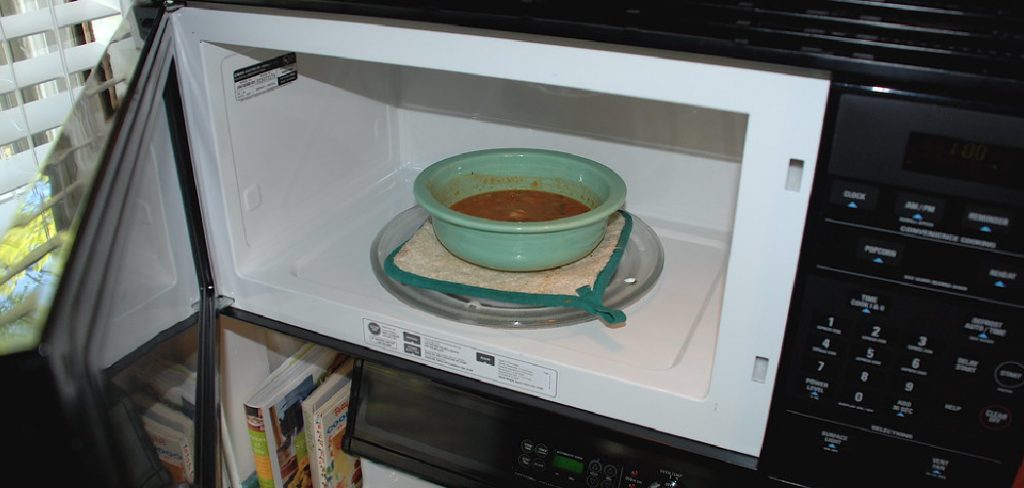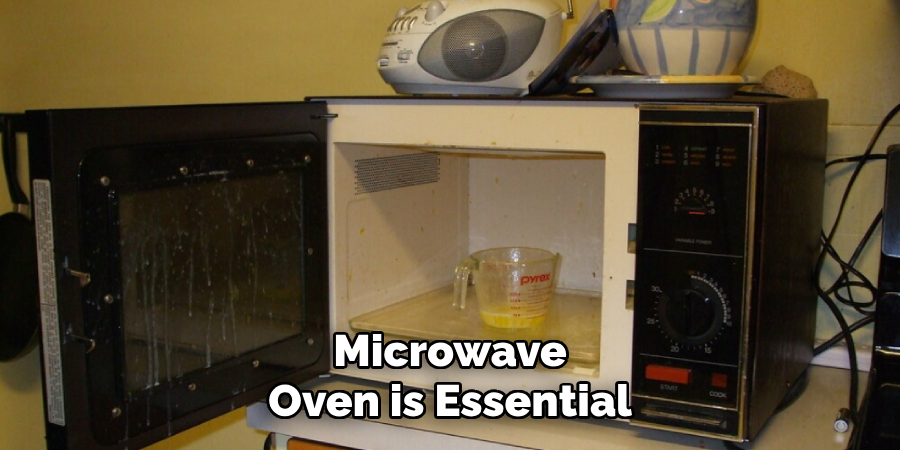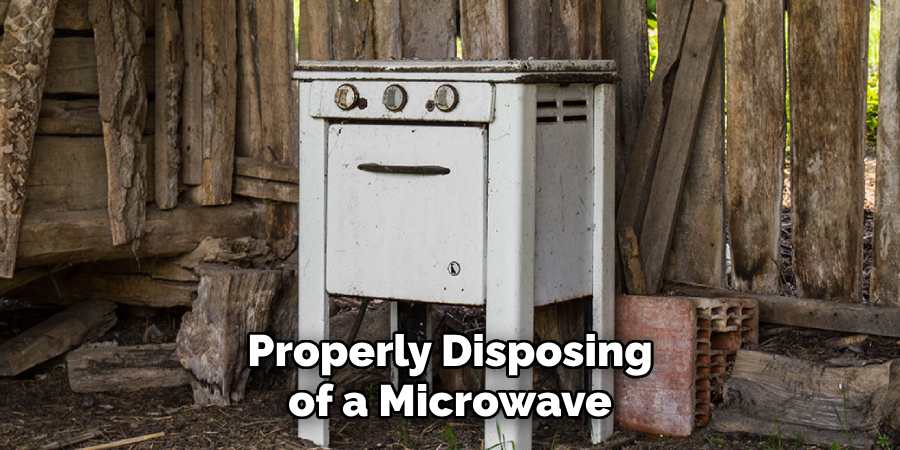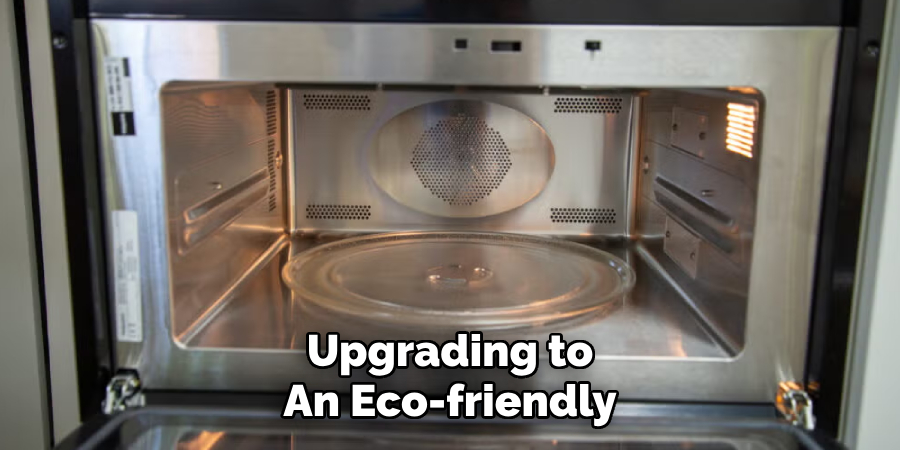Are you looking to get rid of your old microwave oven? Maybe it’s broken or you’re upgrading to a newer model.

Getting rid of an old or broken microwave oven may seem challenging, but there are several safe and responsible ways to dispose of it. Whether upgrading to a newer model or dealing with a malfunctioning appliance, it’s crucial to consider environmentally-friendly solutions. Improper disposal of electronic devices can harm the environment, as appliances like microwaves often contain materials that should not end up in landfills.
This guide on how to get rid of a microwave oven will help you explore the best options for getting rid of your microwave oven, from recycling and donation to proper disposal methods.
What are the Causes of Microwave Oven Disposal?
You may need to dispose of your microwave oven for several reasons. Some common causes include:
- The microwave is broken or malfunctioning
- You’re upgrading to a newer model
- You no longer have use for it
No matter the reason, proper microwave oven disposal is crucial for both the environment and safety purposes.
What Will You Need?
Before getting started, gathering the necessary materials and tools for safely disposing of your microwave oven is essential. Here are some items you may need:

- Protective Gear: When handling any electronic device, protecting yourself from potential hazards is essential. Consider wearing gloves, eye protection, and a mask if needed.
- Transportation: If you plan on taking your microwave oven to a recycling center or donation site, you will need a large enough vehicle to transport it.
- Screwdriver: To properly prepare your microwave for disposal, you may need to unscrew certain parts. A screwdriver will come in handy for this task.
- Packaging Materials: If you plan on shipping your microwave to a recycling center, you will need appropriate packaging materials such as bubble wrap and packing peanuts.
Once you have all the necessary materials, you can get started on disposing of your microwave oven in an environmentally-friendly and responsible manner.
9 Easy Steps on How to Get Rid of a Microwave Oven
Step 1: Unplug and Inspect the Microwave
Begin by safely unplugging the microwave from the electrical outlet. Be sure to avoid pulling on the cord directly to prevent damage. Once unplugged, inspect the microwave for any visible damage, such as cracks, dents, or exposed wires. Examining the appliance can help you determine if it can be repaired, donated, or if it requires recycling. Additionally, remove any items inside the microwave, such as the glass turntable or trays, as these components may need separate disposal or can even be recycled independently in some cases.
Step 2: Clean the Microwave Thoroughly
Before disposing of your microwave, it’s essential to clean it thoroughly. Use a damp cloth or sponge with mild soap to wipe down both the interior and exterior. Remove any grease, food residue, or debris that may have accumulated over time. This step is essential if you plan to donate the microwave, as cleanliness makes it more appealing to potential recipients. Be sure to dry all surfaces completely to prevent any moisture-related issues during handling or transport.
Step 3: Research Local Disposal and Recycling Options
Properly disposing of a microwave often requires adherence to local regulations and recycling practices. Research disposal options in your area, such as e-waste recycling centers, appliance recycling programs, or community collection events. Many municipalities have specific drop-off locations for electronic waste or hazardous materials to ensure they are processed safely and

responsibly. Check if there are fees associated with recycling or whether specific centers accept microwaves free of charge. By taking the time to identify the appropriate method, you can dispose of your microwave in an environmentally friendly way.
Step 4: Remove and Recycle Accessories
Before disposing of the microwave, remove any detachable accessories such as glass turntables, racks, or trays. These components are often made from materials that can be recycled separately. Check with your local recycling facility to determine if they accept these items and whether they should be processed differently from the primary appliance. Properly sorting and recycling these accessories ensures more materials are repurposed, reducing waste and supporting sustainability efforts.
Step 5: Prepare the Microwave for Disposal
Before taking your microwave to a recycling center or disposal facility, ensure it is clean and free of food residue or debris. Wipe down the interior and exterior using a damp cloth and mild detergent. This helps maintain hygiene and makes the appliance more straightforward for recycling professionals to handle. Some facilities may have specific preparation guidelines, so checking ahead before dropping off your microwave is a good idea. Proper preparation ensures a smoother recycling process and demonstrates responsibility in handling waste.
Step 6: Transport the Microwave Safely
When transporting your microwave to a recycling center or disposal facility, ensure it is handled safely to avoid any damage or accidents. Place the microwave in a sturdy box or secure it with straps in your vehicle to prevent it from shifting during transit.

If the appliance is heavy, consider seeking assistance to lift and carry it properly, reducing the risk of injury. Transporting the microwave with care protects you and your vehicle and ensures that the item arrives in good condition for proper processing.
Step 7: Confirm Proper Disposal or Recycling
Once you have delivered your microwave to the recycling center or disposal facility, confirm that it will be handled correctly according to local regulations. Many facilities provide documentation or receipts confirming the recycling process. This step provides peace of mind, knowing your appliance will be recycled responsibly and not improperly discarded, contributing to environmental conservation efforts.
Step 8: Explore Options for New Appliances
After successfully recycling or disposing of your old microwave, take the opportunity to explore eco-friendly options when purchasing a new appliance. Look for energy-efficient models that carry certifications such as ENERGY STAR, which consume less power and reduce your environmental footprint. Research the appliance’s features, durability, and energy usage to ensure it meets your needs while promoting sustainability. Choosing a greener option is a proactive step toward minimizing your impact on the environment.
Step 9: Share Your Experience
Once you’ve completed the process of recycling or disposing of your old microwave and possibly upgrading to an eco-friendly model, consider sharing your experience with others. Whether through conversations, social media, or community forums, discussing the importance of responsible appliance disposal can inspire others to do the same. Sharing helpful tips or details about local recycling facilities encourages more environmentally conscious decisions and spreads awareness about sustainable practices. Together, small individual actions can lead to a larger collective impact on the environment.

By following these steps and making informed decisions, you can ensure your old microwave is properly disposed of or recycled, minimizing waste and promoting environmental sustainability.
5 Things You Should Avoid
- Dumping It in the Trash: Avoid throwing your microwave oven in the regular garbage bin. Most microwaves contain components that can harm the environment if not disposed of properly.
- Burning or Dismantling It Yourself: Never attempt to burn or manually dismantle a microwave oven. This can release toxic chemicals and pose serious health and safety risks.
- Ignoring Local Disposal Regulations: Ensure you are aware of and comply with your local guidelines for disposing of electronic waste. Ignoring these rules can lead to fines or improper handling of hazardous materials.
- Leaving It by the Curb Without Notice: Dumping a microwave by the curb without coordinating pickup with your local waste management is irresponsible and may result in fines or the appliance being left unattended.
- Donating Non-Functioning Units to Charities: Avoid donating a broken or non-functional microwave to a charity or thrift store, as this increases their burden. Always ensure the appliance is in working condition before considering donation.
Is It Ok to Use an Old Microwave?
While it may be tempting to continue using your old microwave, several factors should be considered before doing so. Firstly, the age of the appliance should be taken into account. Older microwaves may not function as efficiently and pose safety hazards.
Additionally, older microwaves may contain materials that are now banned or restricted due to health and environmental concerns. It is essential to research the make and model of your microwave to determine if any hazardous materials were used in its production.
Another factor to consider is the availability of replacement parts. As microwaves age, finding replacement parts for repairs may become difficult or even impossible. This can render the appliance useless if it breaks down.
Conclusion
When disposing of an old microwave oven, it is essential to do so responsibly.
Recycling is one of the best options, as it ensures that the appliance is broken down into reusable materials while minimizing environmental harm. Contact local recycling centers or electronic waste disposal services to see if they accept microwaves. Alternatively, consider donating the appliance to a charity or thrift store, but only if it is in good working condition and follows donation guidelines. Avoid throwing microwaves into regular trash, as they can release harmful environmental materials.
By taking these steps on how to get rid of a microwave oven, you can safely and responsibly dispose of your microwave while contributing to sustainable waste management practices.
Professional Focus
Angela Ervin, a former interior designer turned blogger, specializes in kitchen design and renovations. Through her website, she blends her passion for cooking with design expertise, sharing practical and creative ideas. Known for balancing functionality and beauty, Angela’s insightful content has made her a trusted voice in home design and lifestyle.
About the Author
Angela Ervin, an experienced interior designer and blogger, combines her passion for kitchen renovations with storytelling. Living in Petersburg with her family, she enjoys cooking and testing her projects firsthand. Known for her humor and relatable style, Angela shares creative, functional design insights through her content, making her a trusted voice in home design.
Education History
University: Virginia Commonwealth University
Degree: Bachelor of Fine Arts (BFA) in Interior Design
- Angela’s education at VCU focused on mastering core interior design principles, including spatial planning, color theory, materials selection, and sustainable design practices.
- She gained hands-on experience through studio projects and collaborative design exercises, which honed her ability to create functional and aesthetically pleasing environments.
- Her coursework also emphasized problem-solving and practical applications of design, preparing her for real-world projects like her self-directed kitchen renovations.
- The program’s strong foundation in both technical skills and creative expression shaped Angela’s ability to seamlessly integrate form and function in her work.
